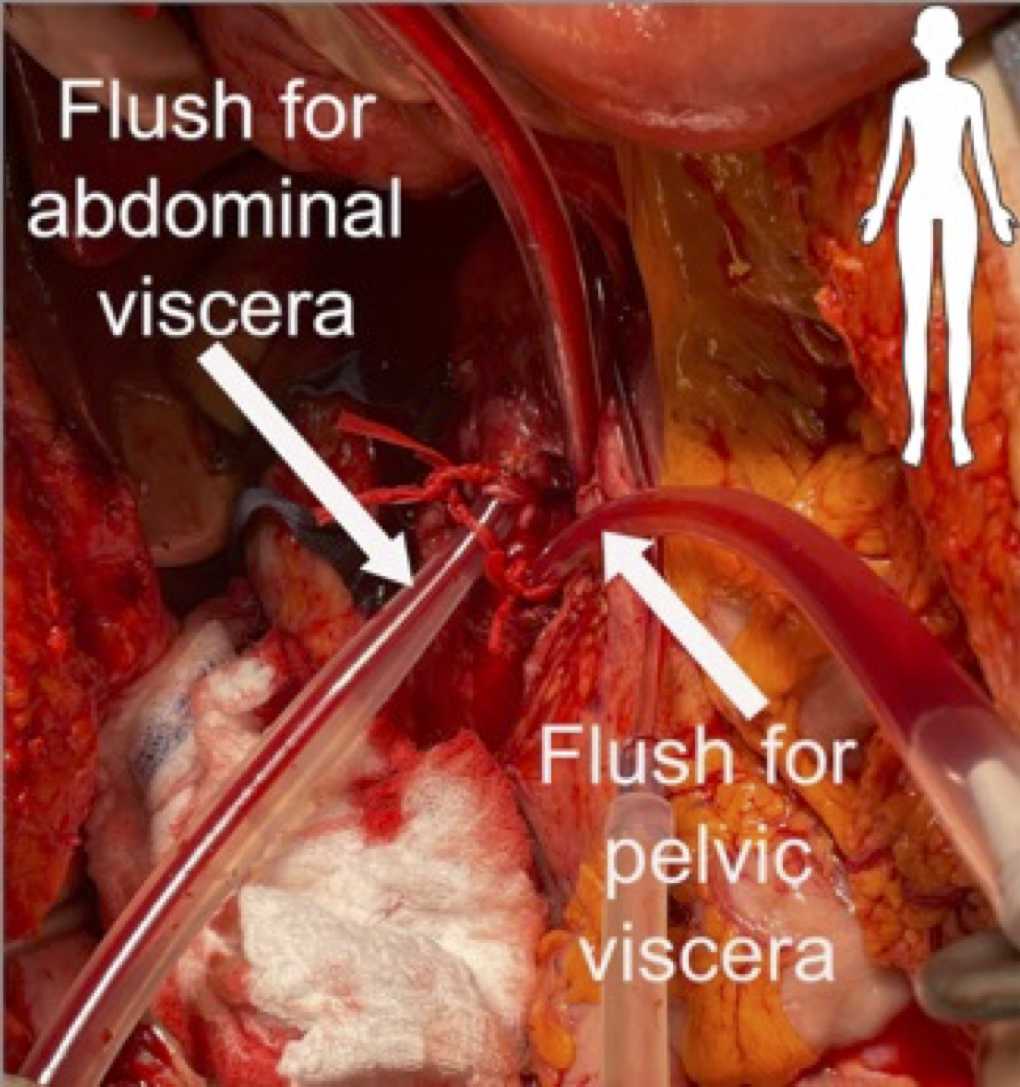Preparation and Preservation of the Female Reproductive System (Ovaries, Fallopian Tubes, and Uterus)
Stephen Fisher, Marielena Grijalva, Rong Guo, Sarah A Johnston, Hieu Nguyen, John Renz, Jean G Rosario, Steven Rudich, Brian Gregory, Junhyong Kim, Kate O'Neill
Abstract
This protocol describes procurement of the FRS after standard multiorgan procurement. The approach for multi-organ donation was pioneered by transplant surgeon Dr. Thomas Starzl more than three decades ago (Starzl, 2009). To minimize total ischemic time, surgery start time is defined by the organ procurement organization and all other team members, transplant teams, and transport systems. Multiple transplant teams may be responsible for the donor’s different organs. Removal of the organs typically proceeds as follows: heart, lung, liver, pancreas, small bowel, kidneys, and large vessels/tissues used as grafts. This order may be changed according to planned transplantations and center expertise. The FRS is recovered last.A standard or modified xipho-pubic incision may be used (Richards, Flyckt, Tzakis, & Falcone, 2018; Testa et al., 2018). This protocol describes a modified aortic cannulation scheme that ensures organ preservation solution is directed both cephalad to perfuse the abdominal organs and caudad to the pelvis in order to preserve the female reproductive tract. This protocol was developed as part of a uterus transplant clinical trial (ClinicalTrials.gov Identifier: NCT03307356).
- Richards, E. G., Flyckt, R., Tzakis, A., & Falcone, T. (2018). Uterus transplantation: Organ procurement in a deceased donor model. Fertility and Sterility , 110 (1), 183. https://doi.org/10.1016/j.fertnstert.2018.04.014
- Starzl, T. E. (2009). AN IMPROVED TECHNIQUE FOR MULTIPLE ORGAN HARVESTING, 12.
- Testa, G., Anthony, T., McKenna, G. J., Koon, E. C., Wallis, K., Klintmalm, G. B., … Johannesson, L. (2018). Deceased donor uterus retrieval: A novel technique and workflow. American Journal of Transplantation , 18 (3), 679–683. https://doi.org/10.1111/ajt.14476
Before start
Steps
Modified aortic and portal cannulation strategy to perfuse pelvic organs
Conduct primary evaluation of ovaries, Fallopian tubes, and uterus to rule out structural abnormalities, malignancy, or infection.
Establish a cold perfusion line in preparation for aortic and portal cannulation.
Restrict the distal part of the aorta by placing a Dacron tie above the bifurcation of the common iliac arteries.
Note : This Dacron tie will be used to secure the cannula placed to perfuse the organs in the thorax and abdomen.
Place an additional Dacron tie alongside the first tie but do not use it to restrict the aorta.
Note : This will be used for the cannula perfusing the pelvis.
Place a temporary vascular clamp on the aorta proximal to the Dacron tie to block blood flow to this aortic segment.
Make an approximately 2-3cm arteriotomy with the 11 blade above the bifurcation of the abdominal aorta into the common iliac arteries.
Insert a 24-gauge cannula into the aortic arteriotomy directed cephalad and secure with the preplaced Dacron tie, making sure that this cannula is INFERIOR to the renal arteries.
Place a 18-gauge cannula through the same aortic incision, directed caudad to perfuse the pelvic organs with perfusion solution.

Ligate and perfuse pelvic organs
Caution: Caution : Do not ligate the inferior aorta distal to the cannulation site (at the bifurcation of the common iliacs) as may typically be done in standard organ procurement to improve retrograde perfusion of the abdominal organs.
Remove the temporary vascular clamp.
Start standard cold perfusion of the abdominal and thoracic organs
Flush 1L organ preservation solution through the cannula directed caudal towards the pelvic viscera, using Belzer MPS® UW Machine Perfusion Solution or another preservation solution low in sodium and high in potassium (similar in composition to intracellular fluid).
Divide the inferior vena cava below the right atrium for efflux of blood and perfusion solution.
Cover all viscera, including the pelvic organs, with slush ice.

